Events
| Name | organizer | Where |
|---|---|---|
| MBCC “Doing Business with Mongolia seminar and Christmas Receptiom” Dec 10. 2025 London UK | MBCCI | London UK Goodman LLC |
NEWS
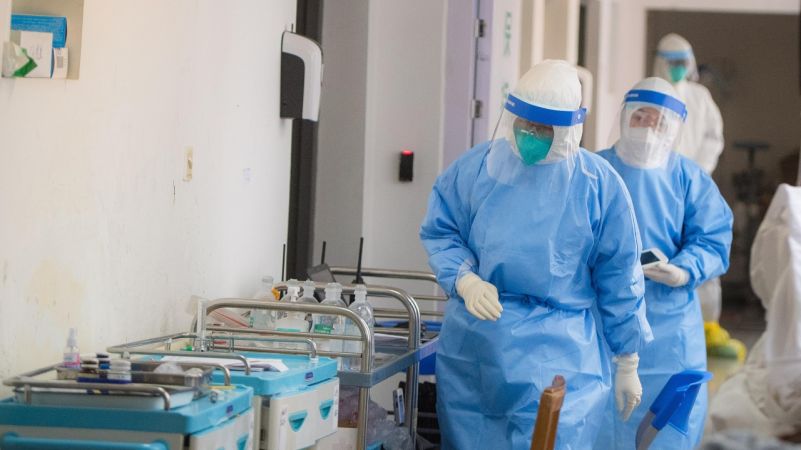
New COVID-19 variant BF7-1 registered in Mongolia www.akipress.com
WHO named the 10 countries with the highest number of coronavirus cases. The first place in this list is occupied by Japan, the second by South Korea, the third by China, the seventh by Russia. Mongolia has close relations with these countries.
Mongolia reported 772 COVID-19 cases last week compared to 357 cases the previous week.
A 72-year-old man was diagnosed with the BF7-1 variant. This person is a citizen of China and came to Mongolia after working in Russia. He is in isolation and is being treated at a hotel, head of the National Center for Research on Infectious Diseases Ts. Bilegtsaykhan says.
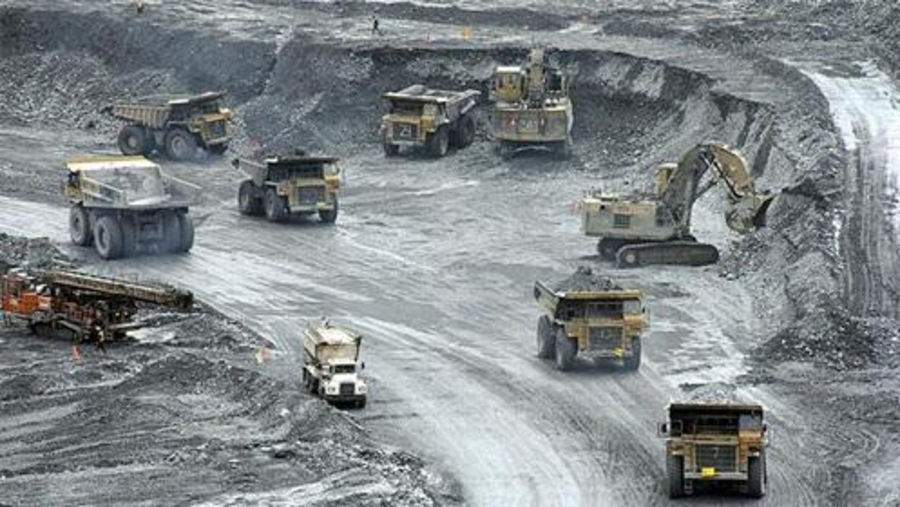
“Erdenes Tavantolgoi” company to not agree on upfront payment terms www.montsame.mn
During its regular meeting dated October 26, the Cabinet made a decision to impose an emergency regime for “Erdenes Tavantolgoi” state-owned enterprise for six months, assigning State Secretary of the Ministry of Finance J. Ganbat as the Government’s Special Representative to take relevant measures to improve the company’s operations and management and increase the revenue.
In this regard, on November 8, the Special Representative held a press briefing, during which he emphasized that making the company’s information on contracts and activities transparent and open to the public is the most appropriate solution.
After being assigned as the Government’s special representative, he started publicizing the coal mining and transportation information and contracts signed with mining companies accessible on the company’s website. Tender information related to procurement is linked online. Specifically, the quantity of coal loaded from the mine is disclosed on the company’s website. He clarified getting information about which company, how many vehicles, and how many tons of coal are loaded on the requested date.
As of today, 265 vehicles have loaded 30,497 tons of coal.
There are 4 contracts with 4 large foreign and domestic state-owned and private sector companies with upfront payment terms. Currently, USD 45 million have been received out of the agreed amount of USD 605 million. There are 27 contracts for coking coal for 100 thousand to 1 million tons made on standard commercial coal purchases and sales.
In addition, the transparency will disclose 109 contracts for thermal coal supply amounting to 20,000 to 300,000 tons.
Now, the company is working on making the process of coal loaded from the mine and unloaded in Tsagaankhad to cross the border transparent. There is no doubt of having a difference between them. Making information visible will therefore enable the people to perceive the balance, whilst keeping it secret breeds mistrust. Coal transport vehicles from the mine will be monitored digitally. He informed that the "Erdenes Tavantolgoi" company would only accept cash on delivery terms and would not consent to an upfront payment.
The company purchases MNT 3.4 trillion annually. As of last Friday, 833 vehicles transported coal.
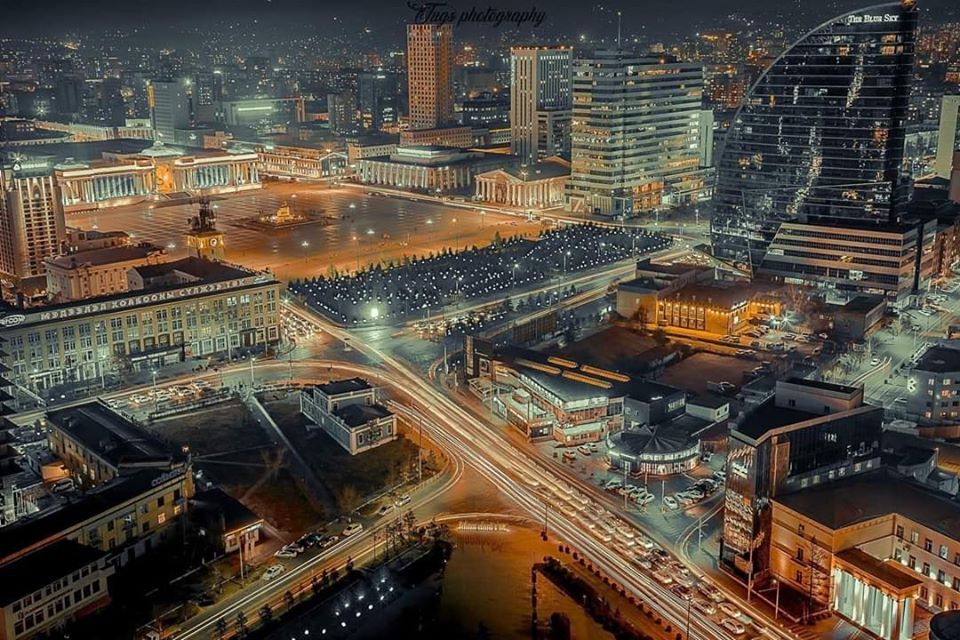
"Golomt Bank" LLC has registered shares to be issued as public offer www.montsame.mn
A total of 31 issues were discussed at the 20th regular meeting of the FRC (9 November 2022), and decided to register the ordinary shares of "Golomt Bank" LLC in the register of securities approved for public offering. "Golomt Bank" LLC is the second bank among influential banks in the banking system to register its shares for public offering within the framework of the reform of the banking system. Implementation of public offering of shares (IPO) by banks will increase the value of the stock market, increase the number of new products with good liquidity, improve the activity and participation of foreign and domestic investors, and make banking operations more transparent and open. In addition to the creation of long-term sources of financing for banks and the increase in credit output, it will be an important step in creating a multi-pillar financial system.
Also, it was decided to register bonds to be issued under the program as a public offering of "Invescor BBSB" JSC. The company plans to raise a total of MNT 50.0 billion by partially issuing its bonds.
It was also decided to register;
securities backed by assets issued by two companies,
two companies as legal entities that provide legal advice to participants in the securities market,
to grant a special license to one company to engage in investment management activities.
Also:
two companies were granted a special license to operate as a real estate brokerage organization,
three individuals were granted a special license to operate as a trader in precious metals, precious stones, or articles made from them,
four savings and credit cooperatives were granted a special license to operate, and
one approved changes in the structure and composition of the company's shareholders,
to restore the special license of one company to engage in brokerage activities in the securities market and six companies to engage in non-banking financial activities.
FRC
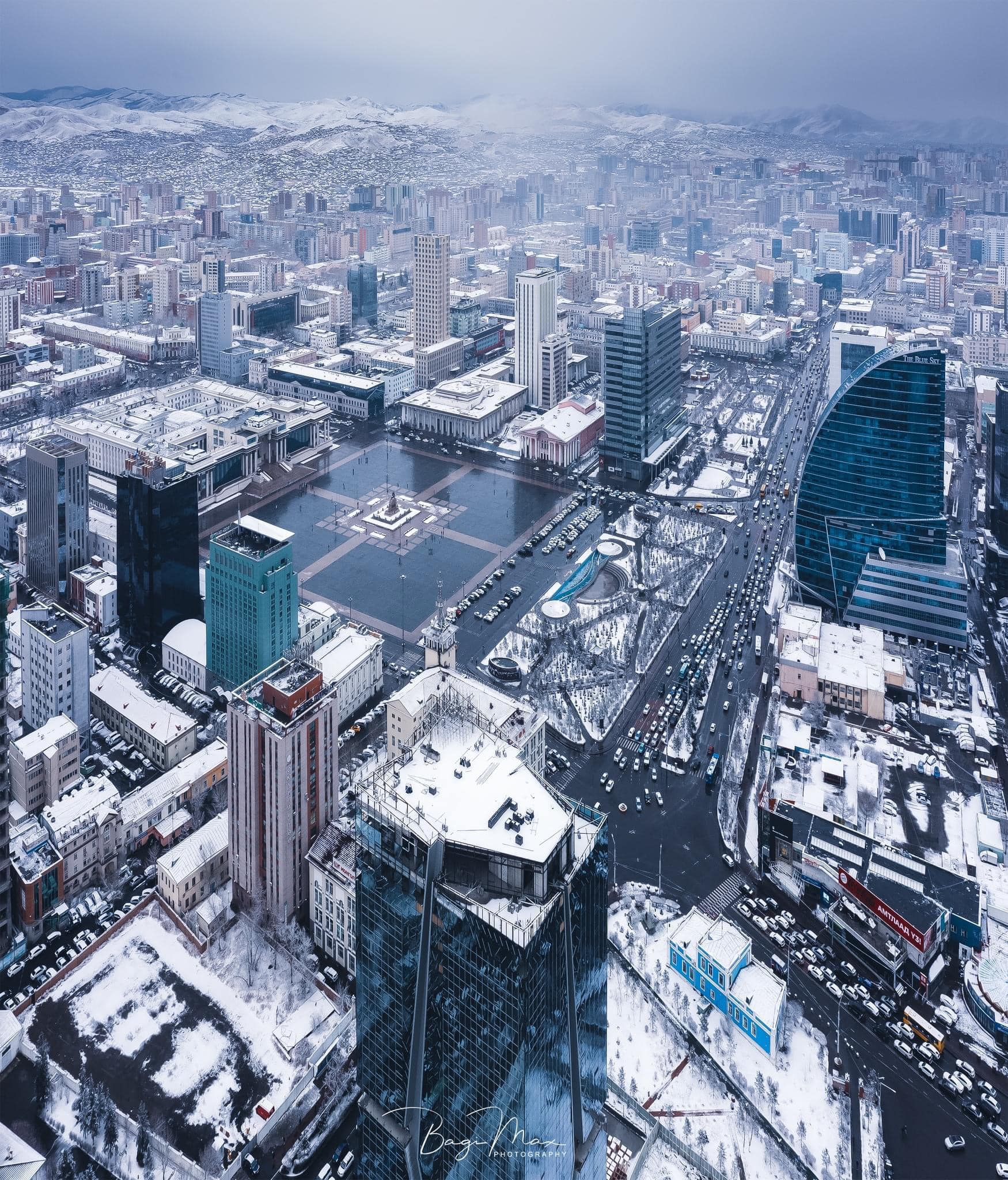
Digital solutions to make life easier for UB citizens www.theubposts.com
Wise and timely decision to use new solutions to solve the issues of the city, ensure the comfort of citizens and create conditions for living in a safe and pleasant environment. Therefore, the digital transition plan of Ulaanbaatar has been presented taking into account international standards, the characteristics of Mongolia, the culture and traditions of the citizens, the extreme climate and the characteristics of the state structure. In other words, Ulaanbaatar is cooperating with more than 70 national IT entities and 1,000 Mongolian engineers to use information technology solutions in each branch of the capital. We are highlighting digital solutions that were introduced in the city.
INTEGRATED INFORMATION OF PUBLIC TRANSPORT – ePASS SYSTEM
As part of the digitalization of public transport, the ePASS project, an integrated system with automation and information technology solutions will be introduced to the city’s public transport and school bus services.
With the introduction of this system, the public transport card can be recharged with a bank card and it will become easier to check and monitor the balance. An electronic notice board will be placed at each bus stop, which will allow one to see bus routes. All the above-mentioned information will be delivered to visually impaired people by voice with the help of artificial intelligence-based technology.
BE WITH YOUR CHILD ANYWHERE – eSCHOOL SYSTEM
The eSchool system with comprehensive technological solutions will provide many opportunities, including knowing what time your child eats, which bus he or she takes and how he or she does homework. The platform consists of four applications: eSchool for school administrators, eTeacher for teachers, eStudent for students and eParent for parents and guardians.
In other words, school management, teachers, parents and guardians and children will exchange information without delay to not only improve the quality and accessibility of education but also monitor the student’s lunch and travel by bus and create conditions for all parties to participate in their safety.
BOOK AN APPOINTMENT DIGITALLY WITH FAMILY HEALTH CENTER
A simpler solution to the process of obtaining primary health care services is also being introduced in the city. By connecting family health center operations with cloud technology, smart kiosks and smart devices based on the Android operating system, the Smart health appointment system will make medical care more accessible.
With this system, citizens can book an appointment digitally at a family health center and collect information about their doctor’s examination. In this way, there will be many advantages, including making the services of family health centers accessible, as well as easing the burden on doctors and medical staff and improving the processing of complaints.
PARTICIPATION IS IMPORTANT – ‘DIGITAL CITY’ APPLICATION
It is possible to receive and distribute news related to Ulaanbaatar promptly, as well as monitor the resolution of submitted applications, complaints and suggestions with this mobile application.
In 204 khoroos of the capital, 1,832 officials provide basic government services to 1,639,172 citizens of more than 420,000 households. They receive citizens’ feedback, convey the policies, decisions and activities implemented by the city and district to citizens and enterprises, monitor the environment and prevent crimes. The “Digital City” mobile application will be introduced to facilitate these tasks, bring the relationship between the government, citizens and enterprises to a new level, provide feedback and complaints, and pay taxes and fees in a unified way. In this way, the activities of these officials will be fully digitized.
As a result of this solution, which will fully facilitate communication between the government and citizens, corruption and bureaucracy will be reduced, public services will become transparent and it will also save citizens’ time and money.
CAPITAL CITY TRAINING, RESEARCH, AND PUBLIC RELATIONS AGENCY
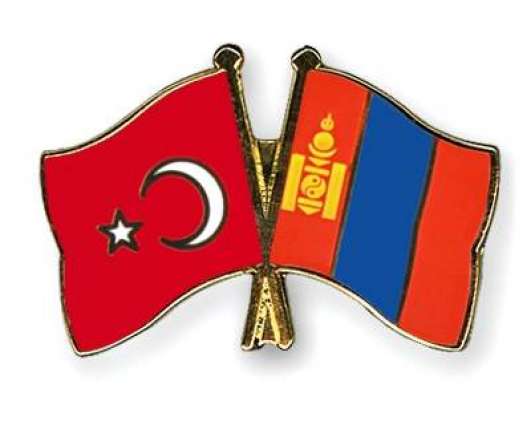
Views exchanged on issues of cooperation in tourism www.montsame.mn
On November 8, Prime Minister of Mongolia L. Oyun-Erdene received Ambassador Extraordinary and Plenipotentiary of the Republic of Turkiye to Mongolia Zafer Ates.
During the meeting, the sides concurred that the relations and cooperation between the two countries are developing in all spheres, especially in trade, tourism and culture.
The Prime Minister informed that the Government of Mongolia has declared 2023 and 2024 “The Years to Visit Mongolia” and an intergovernmental draft agreement on cooperation in tourism was approved during the last week’s cabinet meeting.
The sides also agreed that the cooperation in tourism and the economy will be further developed once the number of Istanbul-Ulaanbaatar-Istanbul flights is operated seven times a week.
The Prime Minister expressed support for mutually beneficial cooperation in infrastructure projects such as the establishment of a tourism complex in the Orkhon and Tamir valleys and the construction of a satellite city in the Khushig valley.
For his part, the Turkish Ambassador thanked the Prime Minister for taking the time to meet with him while emphasizing that the linguistics and cultural values that Mongolia and Turkiye share are the fundamentals of successful bilateral relations and cooperation.
He also stressed the importance of high-level visits for strengthening bilateral relations and cooperation and expressed confidence that the works agreed upon during the recent visits of the Mongolian State Great Khural Chairman to Turkiye and the Turkish Minister of Tourism and Culture to Mongolia will be successfully implemented.
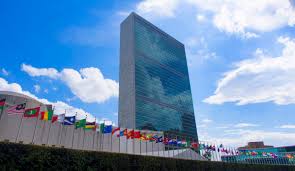
“Sustainable Development Cooperation Framework” document presented to Prime Minister www.montsame.mn
On November 8, Prime Minister of Mongolia L. Oyun-Erdene received United Nations Resident Coordinator in Mongolia Tapan Mishra to discuss the relations and cooperation between the two sides.
UN Resident Coordinator Tapan Mishra expressed that the UN and its specialized agencies would support the Government of Mongolia's New Revival Policy and presented the Prime Minister with the document of the UN Sustainable Development Cooperation Framework for Mongolia 2023-2027.
The Prime Minister said that this document is aimed at intensifying the implementation of the long-term program document “Vision-2050", is aligned with the Action Plan of the Government of Mongolia for 2020-2024, and also ensures close intersectoral coordination.
In addition, he informed that the Government of Mongolia is paying a special attention to the issues of renewable energy and water sources.
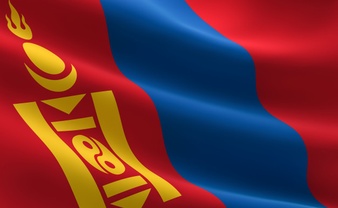
1419 residency permits issued in October www.gogo.mn
Immigration Agency of Mongolia issued visa approvals to 1,064 foreigners, visas to 348 citizens, and electronic visas to 378 citizens of 27 countries in October, 2022.
Based on the permission of the authorities, 1419 foreign citizens were granted residency permits in Mongolia, and the residence permits of 629 citizens were extended.
Comparing the numbers with 2021, visa approval increased by 58.9 percent, visa issuance by 25.3 percent, residency permit issuance by 52.0 percent, and residency permit extension decreased by 11.6 percent.
Furthermore, Immigration Agency of Mongolia received online requests from 1,519 foreign citizens and 626 enterprises with purpose of reducing the burden of citizens coming in person, and to reduce the number of service steps.

FTX: Cryptocurrency market rocked by near-collapse of exchange www.bbc.com
The digital assets market has been rocked by the near-collapse of one of the world's biggest cryptocurrency exchanges, FTX.
On Tuesday, FTX struck a bailout deal with larger rival Binance after a surge in withdrawals caused a "significant liquidity crunch".
Concerns about FTX's financial health reportedly triggered $6bn (£5.2bn) of withdrawals in just three days.
Binance says it agreed to buy FTX's non-US unit, pending due diligence.
FTX's founder Sam Bankman-Fried and Binance's chief executive Changpeng "CZ" Zhao are two of the most powerful people in the cryptocurrency market and high-profile rivals.
The pressure on FTX came in part from Mr Zhao, who tweeted on Sunday that Binance would sell its holdings of FTX's digital token, known as FTT.
"Due to recent revelations that have came to light, we have decided to liquidate any remaining FTT on our books," he said. FTT has lost almost 80% of its value this week.
On Tuesday Mr Zhao tweeted, "This afternoon, FTX asked for our help. There is a significant liquidity crunch".
Binance said it had signed a letter of intent to buy the firm but had "the discretion to pull out from the deal at any time".
Also on Twitter Mr Bankman-Fried said: "Our teams are working on clearing out the withdraw backlog as is. This will clear out liquidity; all assets will be covered 1:1."
"This is a black swan event that adds more fears in the crypto space. This cold winter for crypto now takes on more fear," Dan Ives, senior equity analyst at Wedbush Securities told the BBC.
The news sent shockwaves through the digital assets market, with cryptocurrencies falling sharply.
Bitcoin fell by more than 10% to hit the lowest level since November 2020.
Meanwhile, online trading platform Robinhood lost more than 19% of its stock market value, while cryptocurrency exchange Coinbase fell by 10%.
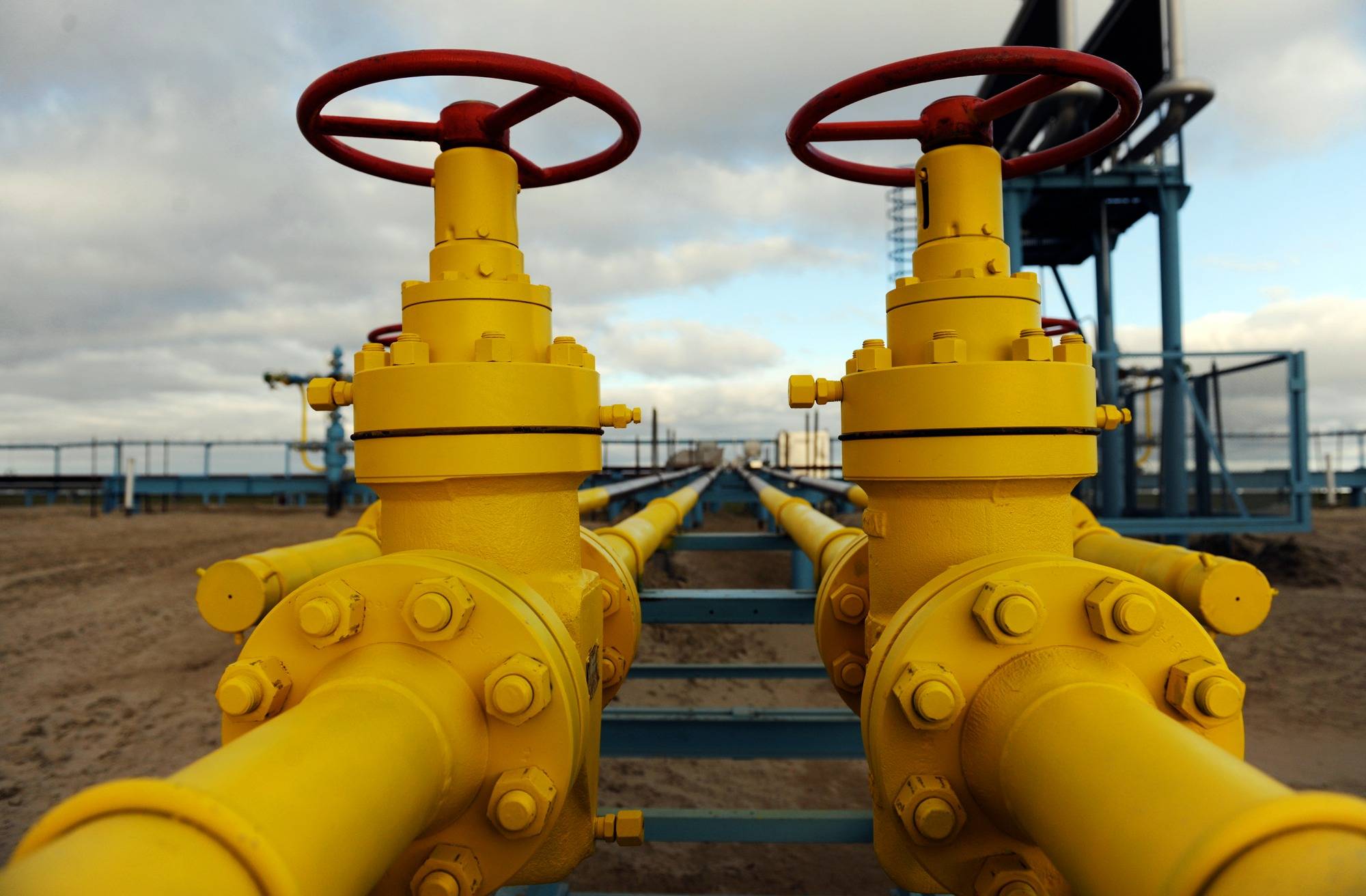
TMK delivers resource estimate for Mongolia CBM project www.naturalgasworld.com
Australia’s TMK Energy has delivered its maiden independently assessed contingent resource estimate for the Nariin Sukhait area within the Gurvantes XXXV coalbed methane (CBM) project in the South Gobi basin in Mongolia, it said on November 9.
The company has also delivered an updated prospective resource estimate for the Nariin Sukhait prospect area completed by NSAI.
NSAI has confirmed 1C contingent resources of 398bn ft3, 2C contingent resources of 1,214bn ft3 and 3C contingent resources of 2,361bn ft3. Combined contingent and prospective resources have increased by approximately 500bn ft3 or 32% for the 70 km2 Nariin Sukhait area, following the 2022 drilling programme.
There has been an overall increase of about 9% for combined contingent and prospective resources for the entire 8,400 km2 Gurvantes project.
TMK said it is currently planning a significant 2023 exploration programme with the aim of converting more of the remaining prospective resources into contingent resources, along with conversion of 3C resources into the 1C or 2C category. Additionally, the company said it is well advanced in planning for its initial pilot well programme expected to commence drilling in the first quarter of 2023.
“The contingent resource estimate has significantly exceeded our expectations and obviously provides us with huge confidence in the scale and future potential commerciality of the project going forward,” TMK CEO Brendan Stats said. “We are now focused on the pilot well program which aims to flow gas to surface and will be another major step forward in demonstrating the commerciality of the project.”
TMK holds a 100% interest in the Gurvantes project. Fellow Australian energy company Talon Energy is earning a 33% working interest in the project under an existing two-stage farm-out agreement.

15 highlights from President of Mongolia's national statement delivered at COP27 www.montsame.mn
President of Mongolia U. Khurelsukh yesterday delivered a national statement at COP27. The following are some of the highlights of his statement that expressed Mongolia's stance on climate change.
In these difficult times when the world is faced with significant challenges such as the global food and energy crisis, rising prices, and geopolitical tensions. It is imperative that all countries remain committed to achieving the Sustainable Development Goals and intensify their actions, especially towards combating climate change without losing momentum.
Soil, food, and human beings are inextricably linked. Healthy soil produces healthy food and healthy food nurtures healthy people. Therefore, combating climate change is important to protecting soil, our food, and humankind.
Every country needs to comprehensively address the pillars of food supply, food security, and climate change as part of SDGs.
Mongolia, in its efforts to achieve SDGs, is successfully implementing the “Food Supply and Security”, “Healthy Mongolians” and “One Billion Trees” national movements.
We believe that the successful implementation of the “One Billion Trees” national movement will not only provide opportunities to increase Mongolia’s forest cover and contribute to the reduction of the greenhouse in the atmosphere but will also positively affect the number of socioeconomic issues by improving soil protection, agricultural production, food supply, and safety and employment opportunities. I am pleased to underscore that UN Secretary-General Antonio Guterres personally supported the movement during his visit to Mongolia.
I would like to express my sincere appreciation to the countries, development partners, and international organizations' collaboration on the “One Billion Trees” movement. It is my pleasure to announce that Mongolia has become the first country in Asia to cooperate with the European Union within the framework of the Forest Partnership Program.
Mongolia is one of the countries most affected by climate change. Although it emits only 0.1 percent of the world’s total greenhouse gas emissions, its per capita and per GDP unit emissions are relatively higher than the world average.
In this regard, our country has set an ambitiously raised target to reduce greenhouse gas emissions by 27.2 percent, which is a high indicator for Mongolia.
Mongolia has huge renewable energy resources estimated at 2,600 gigawatts thanks to its geographical location and climatic conditions. This indicates that Mongolia has the potential to increase its renewable energy production further contributing to the energy supply of the region.
Currently, the portion of renewable energy reached 18.2 percent of Mongolia’s total available installed energy capacity and this is planned to increase to 30 percent by 2030. At present, 75 percent of herder households in Mongolia use renewable energy. We are actively cooperating with international organizations and countries in the region to increase the use of renewable energy sources.
Mongolia has recently joined the Global Methane Pledge, paying particular attention to methane emissions as part of greenhouse gas emission reduction measures.
Mongolia is endeavoring to achieve carbon neutrality around by the mid of the century by enhancing the reduction of greenhouse gas emissions and carbon sequestration.
It is my pleasure to inform you that Mongolia is preparing to host the 17th Conference of the Parties to the Convention to Combat Desertification in 2026.
Bilateral and multilateral cooperation mechanisms of the three Rio conventions and, in particular, the global carbon market regulated by article 6 of the Paris Agreement should be effectively used as instruments for climate change mitigation. Accordingly, developing countries will have more opportunities to spur innovation through technology transfer and increase their access to green financing, successfully overcome the challenges and achieve their goals.
From this honorable podium, I would like to reiterate Mongolia’s willingness to foster open, effective, and mutually beneficial cooperation with every country in the world, international organizations, and development partners.
- «
- 1
- 2
- 3
- 4
- 5
- 6
- 7
- 8
- 9
- 10
- 11
- 12
- 13
- 14
- 15
- 16
- 17
- 18
- 19
- 20
- 21
- 22
- 23
- 24
- 25
- 26
- 27
- 28
- 29
- 30
- 31
- 32
- 33
- 34
- 35
- 36
- 37
- 38
- 39
- 40
- 41
- 42
- 43
- 44
- 45
- 46
- 47
- 48
- 49
- 50
- 51
- 52
- 53
- 54
- 55
- 56
- 57
- 58
- 59
- 60
- 61
- 62
- 63
- 64
- 65
- 66
- 67
- 68
- 69
- 70
- 71
- 72
- 73
- 74
- 75
- 76
- 77
- 78
- 79
- 80
- 81
- 82
- 83
- 84
- 85
- 86
- 87
- 88
- 89
- 90
- 91
- 92
- 93
- 94
- 95
- 96
- 97
- 98
- 99
- 100
- 101
- 102
- 103
- 104
- 105
- 106
- 107
- 108
- 109
- 110
- 111
- 112
- 113
- 114
- 115
- 116
- 117
- 118
- 119
- 120
- 121
- 122
- 123
- 124
- 125
- 126
- 127
- 128
- 129
- 130
- 131
- 132
- 133
- 134
- 135
- 136
- 137
- 138
- 139
- 140
- 141
- 142
- 143
- 144
- 145
- 146
- 147
- 148
- 149
- 150
- 151
- 152
- 153
- 154
- 155
- 156
- 157
- 158
- 159
- 160
- 161
- 162
- 163
- 164
- 165
- 166
- 167
- 168
- 169
- 170
- 171
- 172
- 173
- 174
- 175
- 176
- 177
- 178
- 179
- 180
- 181
- 182
- 183
- 184
- 185
- 186
- 187
- 188
- 189
- 190
- 191
- 192
- 193
- 194
- 195
- 196
- 197
- 198
- 199
- 200
- 201
- 202
- 203
- 204
- 205
- 206
- 207
- 208
- 209
- 210
- 211
- 212
- 213
- 214
- 215
- 216
- 217
- 218
- 219
- 220
- 221
- 222
- 223
- 224
- 225
- 226
- 227
- 228
- 229
- 230
- 231
- 232
- 233
- 234
- 235
- 236
- 237
- 238
- 239
- 240
- 241
- 242
- 243
- 244
- 245
- 246
- 247
- 248
- 249
- 250
- 251
- 252
- 253
- 254
- 255
- 256
- 257
- 258
- 259
- 260
- 261
- 262
- 263
- 264
- 265
- 266
- 267
- 268
- 269
- 270
- 271
- 272
- 273
- 274
- 275
- 276
- 277
- 278
- 279
- 280
- 281
- 282
- 283
- 284
- 285
- 286
- 287
- 288
- 289
- 290
- 291
- 292
- 293
- 294
- 295
- 296
- 297
- 298
- 299
- 300
- 301
- 302
- 303
- 304
- 305
- 306
- 307
- 308
- 309
- 310
- 311
- 312
- 313
- 314
- 315
- 316
- 317
- 318
- 319
- 320
- 321
- 322
- 323
- 324
- 325
- 326
- 327
- 328
- 329
- 330
- 331
- 332
- 333
- 334
- 335
- 336
- 337
- 338
- 339
- 340
- 341
- 342
- 343
- 344
- 345
- 346
- 347
- 348
- 349
- 350
- 351
- 352
- 353
- 354
- 355
- 356
- 357
- 358
- 359
- 360
- 361
- 362
- 363
- 364
- 365
- 366
- 367
- 368
- 369
- 370
- 371
- 372
- 373
- 374
- 375
- 376
- 377
- 378
- 379
- 380
- 381
- 382
- 383
- 384
- 385
- 386
- 387
- 388
- 389
- 390
- 391
- 392
- 393
- 394
- 395
- 396
- 397
- 398
- 399
- 400
- 401
- 402
- 403
- 404
- 405
- 406
- 407
- 408
- 409
- 410
- 411
- 412
- 413
- 414
- 415
- 416
- 417
- 418
- 419
- 420
- 421
- 422
- 423
- 424
- 425
- 426
- 427
- 428
- 429
- 430
- 431
- 432
- 433
- 434
- 435
- 436
- 437
- 438
- 439
- 440
- 441
- 442
- 443
- 444
- 445
- 446
- 447
- 448
- 449
- 450
- 451
- 452
- 453
- 454
- 455
- 456
- 457
- 458
- 459
- 460
- 461
- 462
- 463
- 464
- 465
- 466
- 467
- 468
- 469
- 470
- 471
- 472
- 473
- 474
- 475
- 476
- 477
- 478
- 479
- 480
- 481
- 482
- 483
- 484
- 485
- 486
- 487
- 488
- 489
- 490
- 491
- 492
- 493
- 494
- 495
- 496
- 497
- 498
- 499
- 500
- 501
- 502
- 503
- 504
- 505
- 506
- 507
- 508
- 509
- 510
- 511
- 512
- 513
- 514
- 515
- 516
- 517
- 518
- 519
- 520
- 521
- 522
- 523
- 524
- 525
- 526
- 527
- 528
- 529
- 530
- 531
- 532
- 533
- 534
- 535
- 536
- 537
- 538
- 539
- 540
- 541
- 542
- 543
- 544
- 545
- 546
- 547
- 548
- 549
- 550
- 551
- 552
- 553
- 554
- 555
- 556
- 557
- 558
- 559
- 560
- 561
- 562
- 563
- 564
- 565
- 566
- 567
- 568
- 569
- 570
- 571
- 572
- 573
- 574
- 575
- 576
- 577
- 578
- 579
- 580
- 581
- 582
- 583
- 584
- 585
- 586
- 587
- 588
- 589
- 590
- 591
- 592
- 593
- 594
- 595
- 596
- 597
- 598
- 599
- 600
- 601
- 602
- 603
- 604
- 605
- 606
- 607
- 608
- 609
- 610
- 611
- 612
- 613
- 614
- 615
- 616
- 617
- 618
- 619
- 620
- 621
- 622
- 623
- 624
- 625
- 626
- 627
- 628
- 629
- 630
- 631
- 632
- 633
- 634
- 635
- 636
- 637
- 638
- 639
- 640
- 641
- 642
- 643
- 644
- 645
- 646
- 647
- 648
- 649
- 650
- 651
- 652
- 653
- 654
- 655
- 656
- 657
- 658
- 659
- 660
- 661
- 662
- 663
- 664
- 665
- 666
- 667
- 668
- 669
- 670
- 671
- 672
- 673
- 674
- 675
- 676
- 677
- 678
- 679
- 680
- 681
- 682
- 683
- 684
- 685
- 686
- 687
- 688
- 689
- 690
- 691
- 692
- 693
- 694
- 695
- 696
- 697
- 698
- 699
- 700
- 701
- 702
- 703
- 704
- 705
- 706
- 707
- 708
- 709
- 710
- 711
- 712
- 713
- 714
- 715
- 716
- 717
- 718
- 719
- 720
- 721
- 722
- 723
- 724
- 725
- 726
- 727
- 728
- 729
- 730
- 731
- 732
- 733
- 734
- 735
- 736
- 737
- 738
- 739
- 740
- 741
- 742
- 743
- 744
- 745
- 746
- 747
- 748
- 749
- 750
- 751
- 752
- 753
- 754
- 755
- 756
- 757
- 758
- 759
- 760
- 761
- 762
- 763
- 764
- 765
- 766
- 767
- 768
- 769
- 770
- 771
- 772
- 773
- 774
- 775
- 776
- 777
- 778
- 779
- 780
- 781
- 782
- 783
- 784
- 785
- 786
- 787
- 788
- 789
- 790
- 791
- 792
- 793
- 794
- 795
- 796
- 797
- 798
- 799
- 800
- 801
- 802
- 803
- 804
- 805
- 806
- 807
- 808
- 809
- 810
- 811
- 812
- 813
- 814
- 815
- 816
- 817
- 818
- 819
- 820
- 821
- 822
- 823
- 824
- 825
- 826
- 827
- 828
- 829
- 830
- 831
- 832
- 833
- 834
- 835
- 836
- 837
- 838
- 839
- 840
- 841
- 842
- 843
- 844
- 845
- 846
- 847
- 848
- 849
- 850
- 851
- 852
- 853
- 854
- 855
- 856
- 857
- 858
- 859
- 860
- 861
- 862
- 863
- 864
- 865
- 866
- 867
- 868
- 869
- 870
- 871
- 872
- 873
- 874
- 875
- 876
- 877
- 878
- 879
- 880
- 881
- 882
- 883
- 884
- 885
- 886
- 887
- 888
- 889
- 890
- 891
- 892
- 893
- 894
- 895
- 896
- 897
- 898
- 899
- 900
- 901
- 902
- 903
- 904
- 905
- 906
- 907
- 908
- 909
- 910
- 911
- 912
- 913
- 914
- 915
- 916
- 917
- 918
- 919
- 920
- 921
- 922
- 923
- 924
- 925
- 926
- 927
- 928
- 929
- 930
- 931
- 932
- 933
- 934
- 935
- 936
- 937
- 938
- 939
- 940
- 941
- 942
- 943
- 944
- 945
- 946
- 947
- 948
- 949
- 950
- 951
- 952
- 953
- 954
- 955
- 956
- 957
- 958
- 959
- 960
- 961
- 962
- 963
- 964
- 965
- 966
- 967
- 968
- 969
- 970
- 971
- 972
- 973
- 974
- 975
- 976
- 977
- 978
- 979
- 980
- 981
- 982
- 983
- 984
- 985
- 986
- 987
- 988
- 989
- 990
- 991
- 992
- 993
- 994
- 995
- 996
- 997
- 998
- 999
- 1000
- 1001
- 1002
- 1003
- 1004
- 1005
- 1006
- 1007
- 1008
- 1009
- 1010
- 1011
- 1012
- 1013
- 1014
- 1015
- 1016
- 1017
- 1018
- 1019
- 1020
- 1021
- 1022
- 1023
- 1024
- 1025
- 1026
- 1027
- 1028
- 1029
- 1030
- 1031
- 1032
- 1033
- 1034
- 1035
- 1036
- 1037
- 1038
- 1039
- 1040
- 1041
- 1042
- 1043
- 1044
- 1045
- 1046
- 1047
- 1048
- 1049
- 1050
- 1051
- 1052
- 1053
- 1054
- 1055
- 1056
- 1057
- 1058
- 1059
- 1060
- 1061
- 1062
- 1063
- 1064
- 1065
- 1066
- 1067
- 1068
- 1069
- 1070
- 1071
- 1072
- 1073
- 1074
- 1075
- 1076
- 1077
- 1078
- 1079
- 1080
- 1081
- 1082
- 1083
- 1084
- 1085
- 1086
- 1087
- 1088
- 1089
- 1090
- 1091
- 1092
- 1093
- 1094
- 1095
- 1096
- 1097
- 1098
- 1099
- 1100
- 1101
- 1102
- 1103
- 1104
- 1105
- 1106
- 1107
- 1108
- 1109
- 1110
- 1111
- 1112
- 1113
- 1114
- 1115
- 1116
- 1117
- 1118
- 1119
- 1120
- 1121
- 1122
- 1123
- 1124
- 1125
- 1126
- 1127
- 1128
- 1129
- 1130
- 1131
- 1132
- 1133
- 1134
- 1135
- 1136
- 1137
- 1138
- 1139
- 1140
- 1141
- 1142
- 1143
- 1144
- 1145
- 1146
- 1147
- 1148
- 1149
- 1150
- 1151
- 1152
- 1153
- 1154
- 1155
- 1156
- 1157
- 1158
- 1159
- 1160
- 1161
- 1162
- 1163
- 1164
- 1165
- 1166
- 1167
- 1168
- 1169
- 1170
- 1171
- 1172
- 1173
- 1174
- 1175
- 1176
- 1177
- 1178
- 1179
- 1180
- 1181
- 1182
- 1183
- 1184
- 1185
- 1186
- 1187
- 1188
- 1189
- 1190
- 1191
- 1192
- 1193
- 1194
- 1195
- 1196
- 1197
- 1198
- 1199
- 1200
- 1201
- 1202
- 1203
- 1204
- 1205
- 1206
- 1207
- 1208
- 1209
- 1210
- 1211
- 1212
- 1213
- 1214
- 1215
- 1216
- 1217
- 1218
- 1219
- 1220
- 1221
- 1222
- 1223
- 1224
- 1225
- 1226
- 1227
- 1228
- 1229
- 1230
- 1231
- 1232
- 1233
- 1234
- 1235
- 1236
- 1237
- 1238
- 1239
- 1240
- 1241
- 1242
- 1243
- 1244
- 1245
- 1246
- 1247
- 1248
- 1249
- 1250
- 1251
- 1252
- 1253
- 1254
- 1255
- 1256
- 1257
- 1258
- 1259
- 1260
- 1261
- 1262
- 1263
- 1264
- 1265
- 1266
- 1267
- 1268
- 1269
- 1270
- 1271
- 1272
- 1273
- 1274
- 1275
- 1276
- 1277
- 1278
- 1279
- 1280
- 1281
- 1282
- 1283
- 1284
- 1285
- 1286
- 1287
- 1288
- 1289
- 1290
- 1291
- 1292
- 1293
- 1294
- 1295
- 1296
- 1297
- 1298
- 1299
- 1300
- 1301
- 1302
- 1303
- 1304
- 1305
- 1306
- 1307
- 1308
- 1309
- 1310
- 1311
- 1312
- 1313
- 1314
- 1315
- 1316
- 1317
- 1318
- 1319
- 1320
- 1321
- 1322
- 1323
- 1324
- 1325
- 1326
- 1327
- 1328
- 1329
- 1330
- 1331
- 1332
- 1333
- 1334
- 1335
- 1336
- 1337
- 1338
- 1339
- 1340
- 1341
- 1342
- 1343
- 1344
- 1345
- 1346
- 1347
- 1348
- 1349
- 1350
- 1351
- 1352
- 1353
- 1354
- 1355
- 1356
- 1357
- 1358
- 1359
- 1360
- 1361
- 1362
- 1363
- 1364
- 1365
- 1366
- 1367
- 1368
- 1369
- 1370
- 1371
- 1372
- 1373
- 1374
- 1375
- 1376
- 1377
- 1378
- 1379
- 1380
- 1381
- 1382
- 1383
- 1384
- 1385
- 1386
- 1387
- 1388
- 1389
- 1390
- 1391
- 1392
- 1393
- 1394
- 1395
- 1396
- 1397
- 1398
- 1399
- 1400
- 1401
- 1402
- 1403
- 1404
- 1405
- 1406
- 1407
- 1408
- 1409
- 1410
- 1411
- 1412
- 1413
- 1414
- 1415
- 1416
- 1417
- 1418
- 1419
- 1420
- 1421
- 1422
- 1423
- 1424
- 1425
- 1426
- 1427
- 1428
- 1429
- 1430
- 1431
- 1432
- 1433
- 1434
- 1435
- 1436
- 1437
- 1438
- 1439
- 1440
- 1441
- 1442
- 1443
- 1444
- 1445
- 1446
- 1447
- 1448
- 1449
- 1450
- 1451
- 1452
- 1453
- 1454
- 1455
- 1456
- 1457
- 1458
- 1459
- 1460
- 1461
- 1462
- 1463
- 1464
- 1465
- 1466
- 1467
- 1468
- 1469
- 1470
- 1471
- 1472
- 1473
- 1474
- 1475
- 1476
- 1477
- 1478
- 1479
- 1480
- 1481
- 1482
- 1483
- 1484
- 1485
- 1486
- 1487
- 1488
- 1489
- 1490
- 1491
- 1492
- 1493
- 1494
- 1495
- 1496
- 1497
- 1498
- 1499
- 1500
- 1501
- 1502
- 1503
- 1504
- 1505
- 1506
- 1507
- 1508
- 1509
- 1510
- 1511
- 1512
- 1513
- 1514
- 1515
- 1516
- 1517
- 1518
- 1519
- 1520
- 1521
- 1522
- 1523
- 1524
- 1525
- 1526
- 1527
- 1528
- 1529
- 1530
- 1531
- 1532
- 1533
- 1534
- 1535
- 1536
- 1537
- 1538
- 1539
- 1540
- 1541
- 1542
- 1543
- 1544
- 1545
- 1546
- 1547
- 1548
- 1549
- 1550
- 1551
- 1552
- 1553
- 1554
- 1555
- 1556
- 1557
- 1558
- 1559
- 1560
- 1561
- 1562
- 1563
- 1564
- 1565
- 1566
- 1567
- 1568
- 1569
- 1570
- 1571
- 1572
- 1573
- 1574
- 1575
- 1576
- 1577
- 1578
- 1579
- 1580
- 1581
- 1582
- 1583
- 1584
- 1585
- 1586
- 1587
- 1588
- 1589
- 1590
- 1591
- 1592
- 1593
- 1594
- 1595
- 1596
- 1597
- 1598
- 1599
- 1600
- 1601
- 1602
- 1603
- 1604
- 1605
- 1606
- 1607
- 1608
- 1609
- 1610
- 1611
- 1612
- 1613
- 1614
- 1615
- 1616
- 1617
- 1618
- 1619
- 1620
- 1621
- 1622
- 1623
- 1624
- 1625
- 1626
- 1627
- 1628
- 1629
- 1630
- 1631
- 1632
- 1633
- 1634
- 1635
- 1636
- 1637
- 1638
- 1639
- 1640
- 1641
- 1642
- 1643
- 1644
- 1645
- 1646
- 1647
- 1648
- 1649
- 1650
- 1651
- 1652
- 1653
- 1654
- 1655
- 1656
- 1657
- 1658
- 1659
- 1660
- 1661
- 1662
- 1663
- 1664
- 1665
- 1666
- 1667
- 1668
- 1669
- 1670
- 1671
- 1672
- 1673
- 1674
- 1675
- 1676
- 1677
- 1678
- 1679
- 1680
- 1681
- 1682
- 1683
- 1684
- 1685
- 1686
- 1687
- 1688
- 1689
- 1690
- 1691
- 1692
- 1693
- 1694
- »






